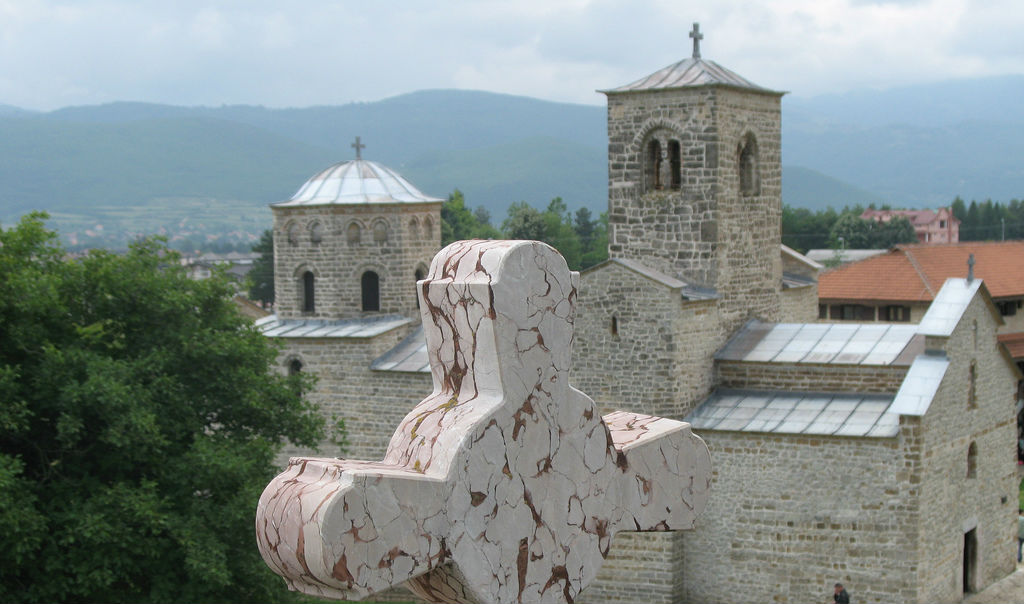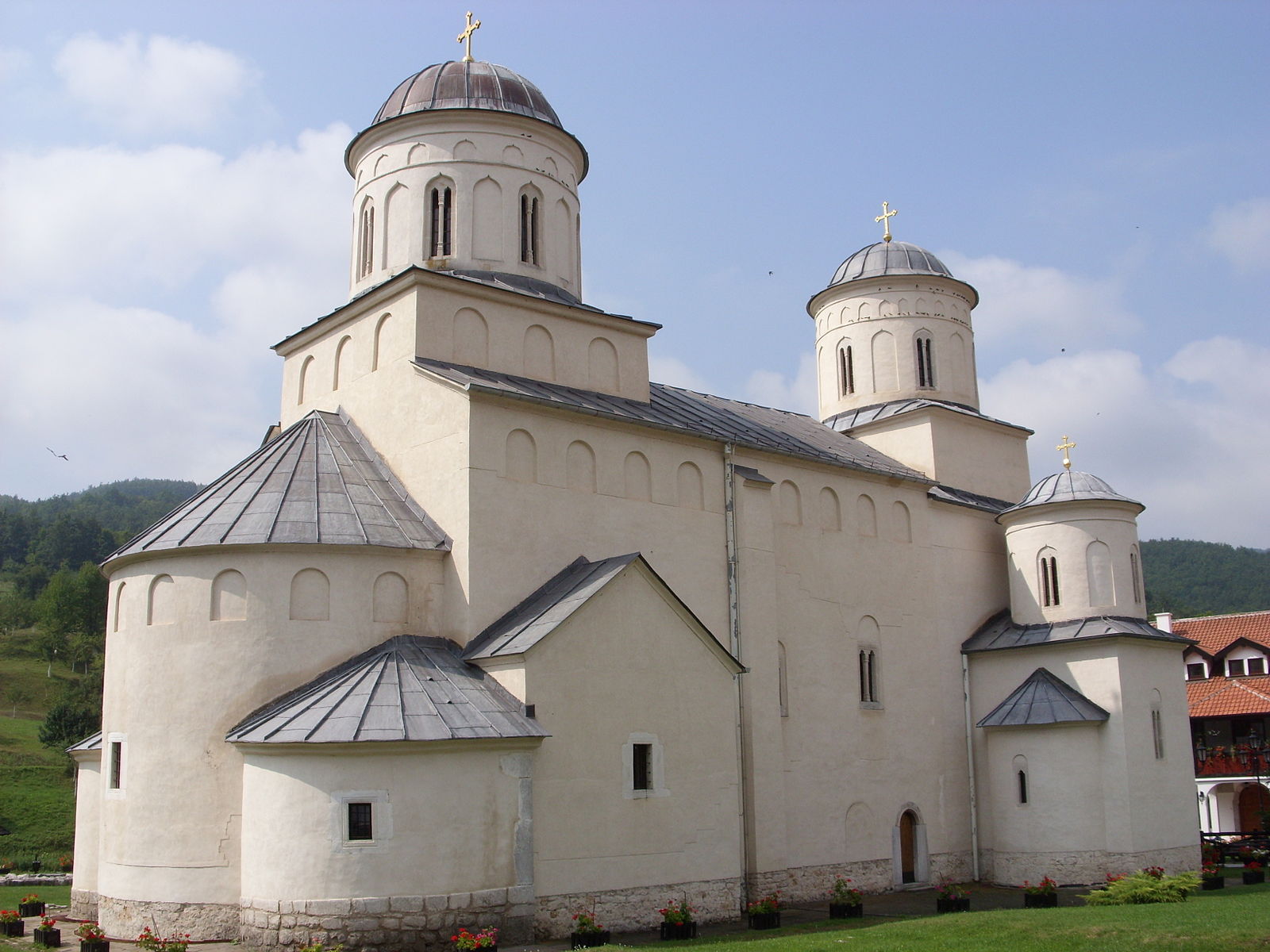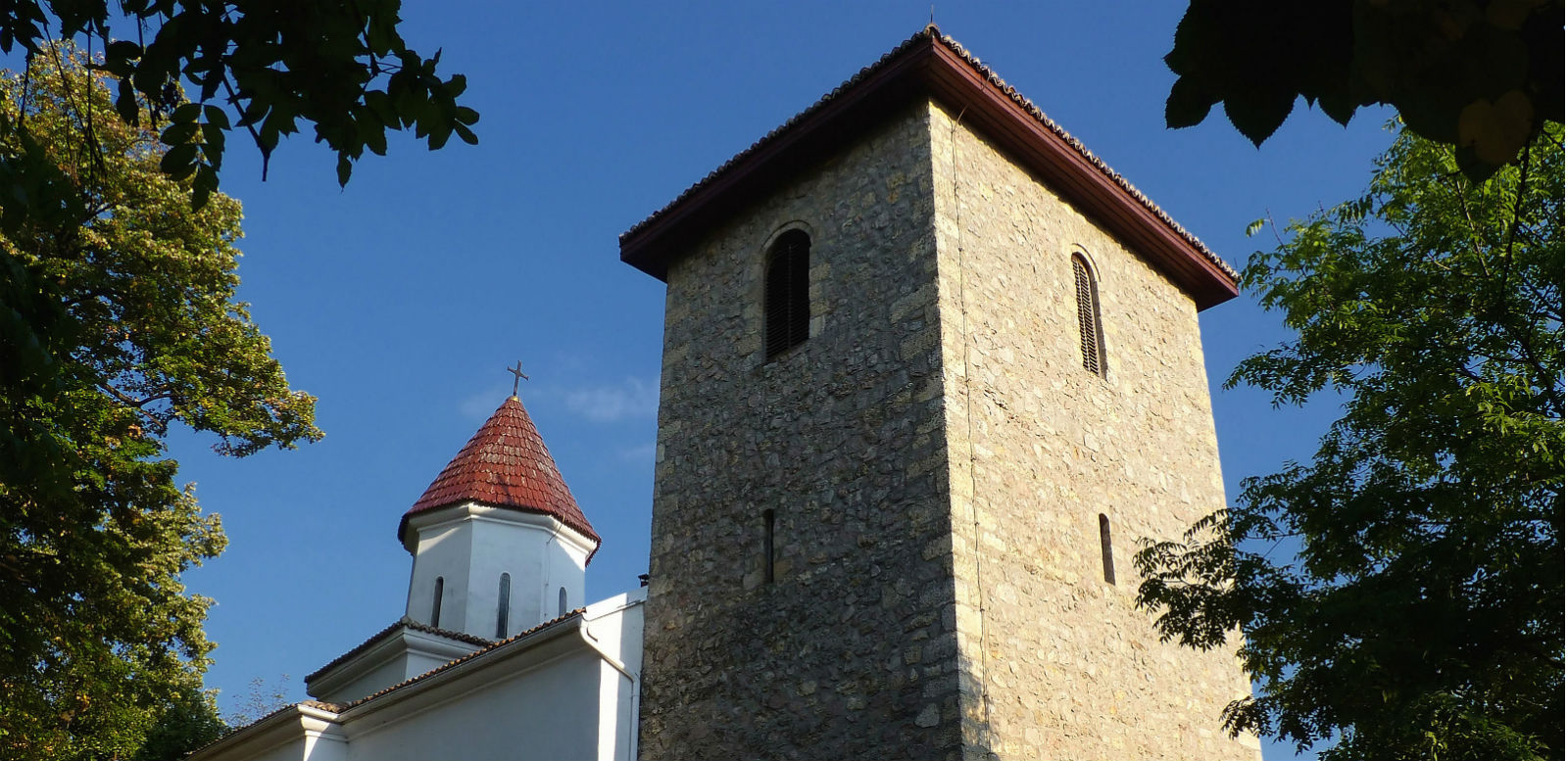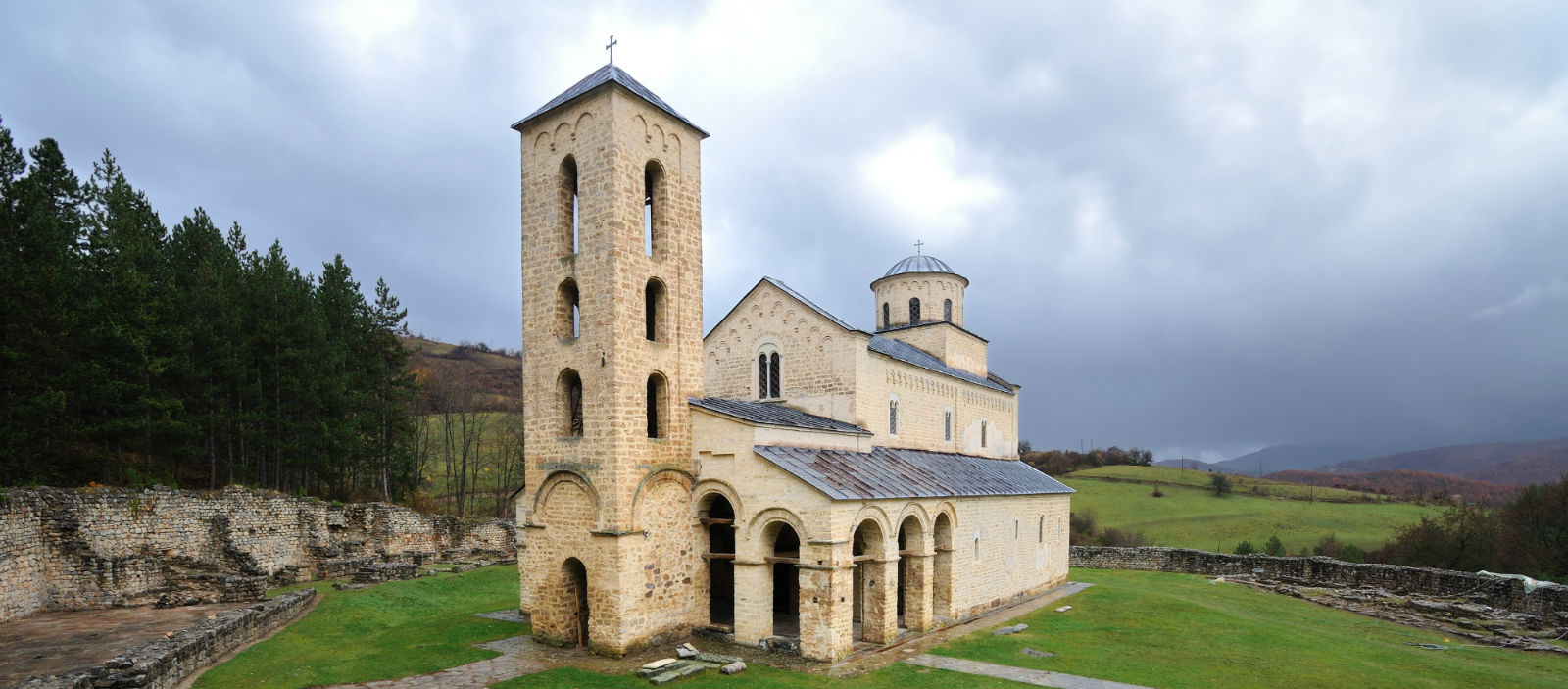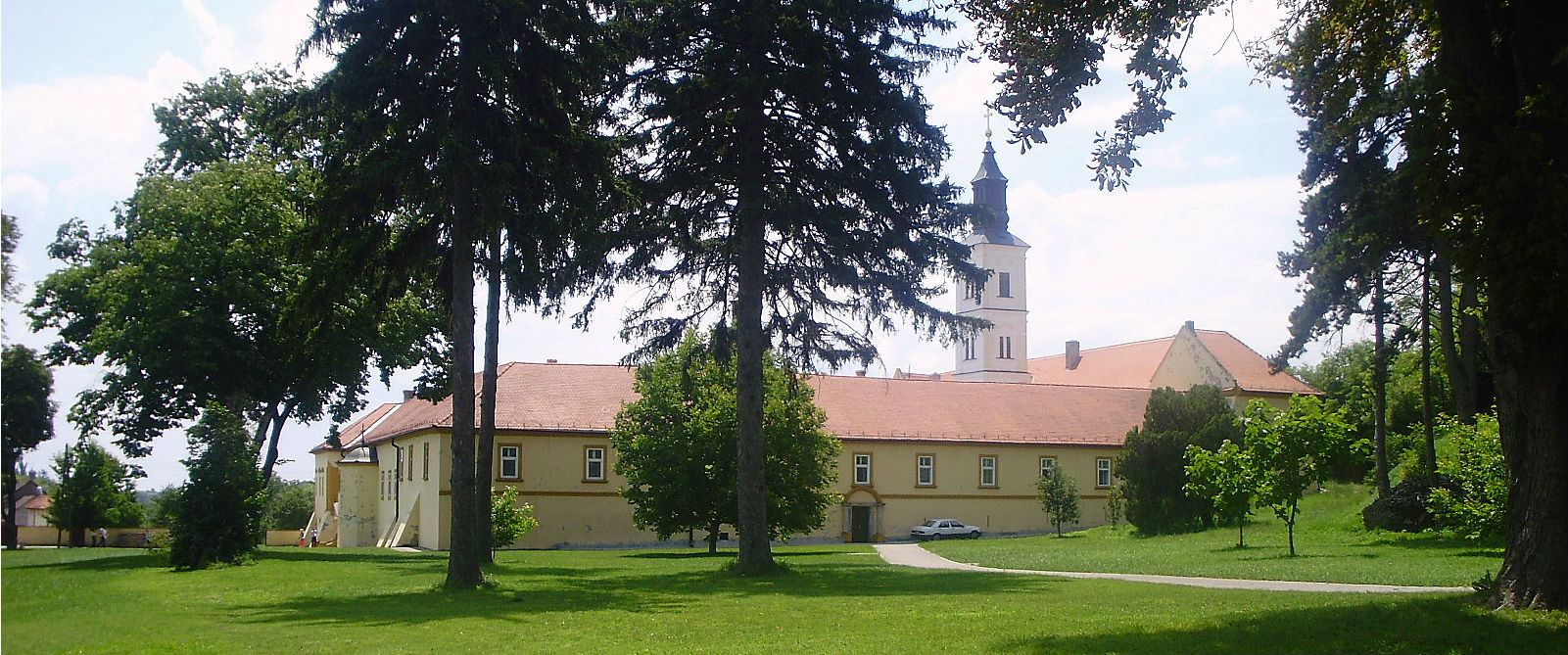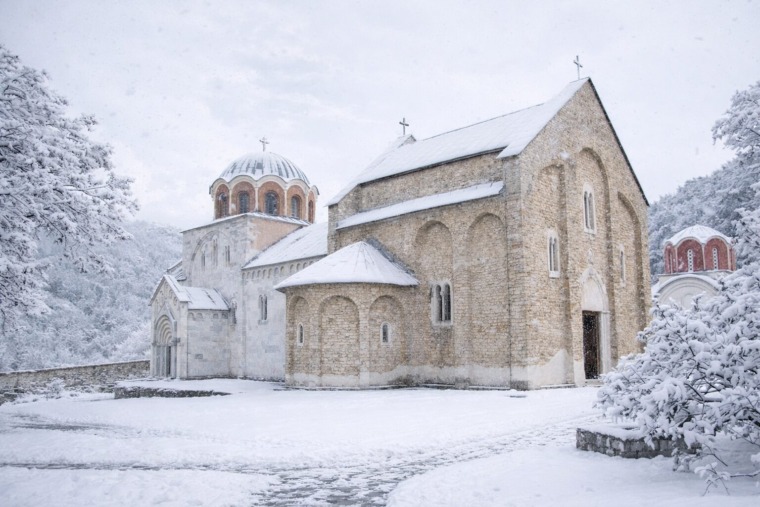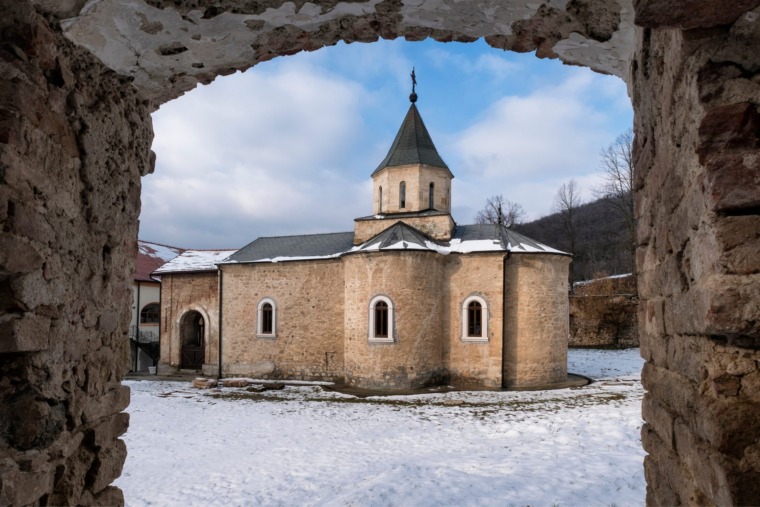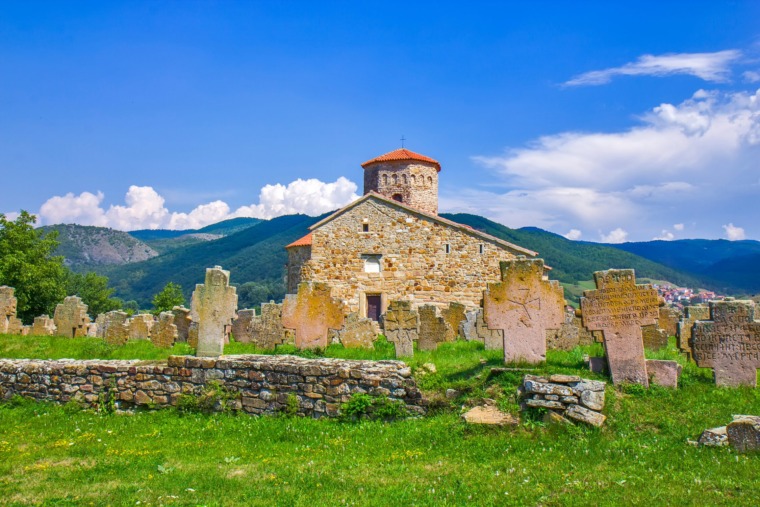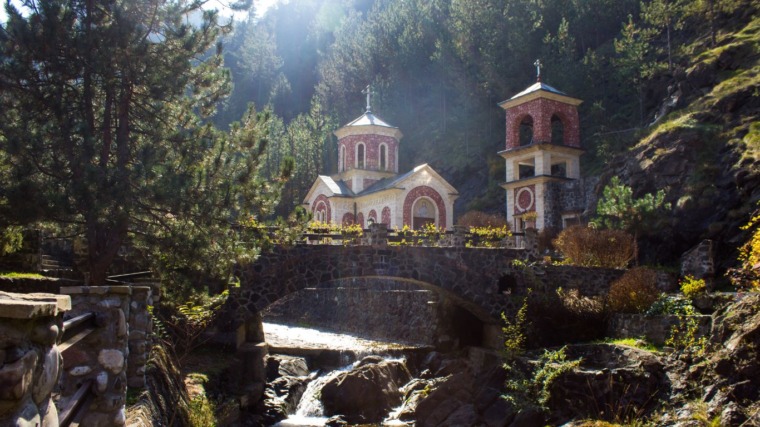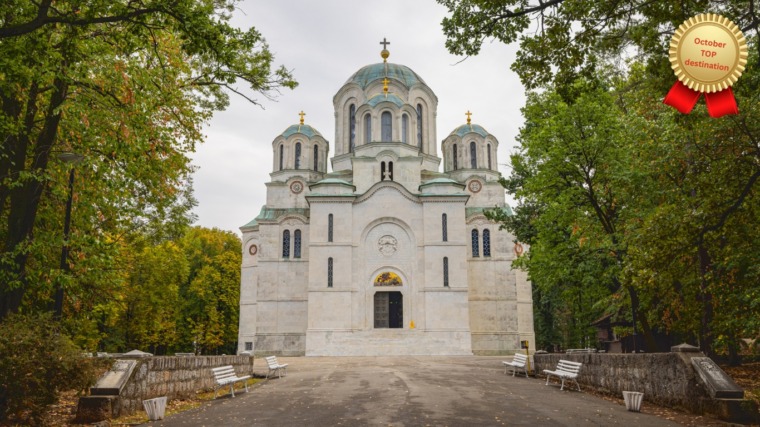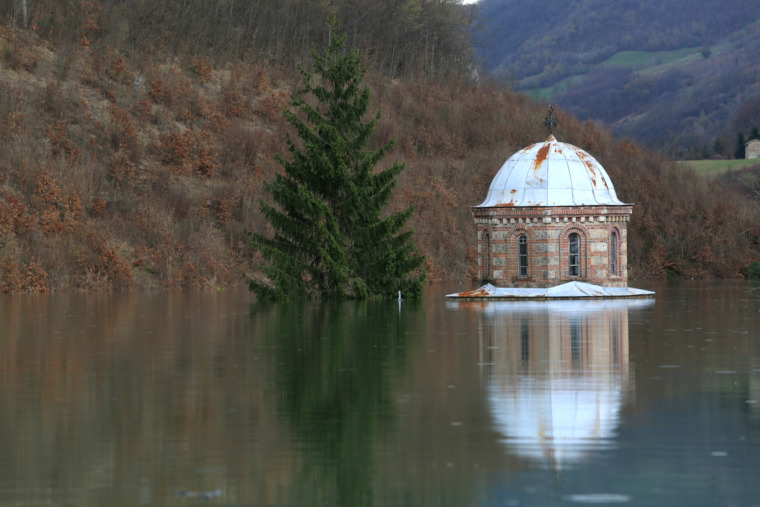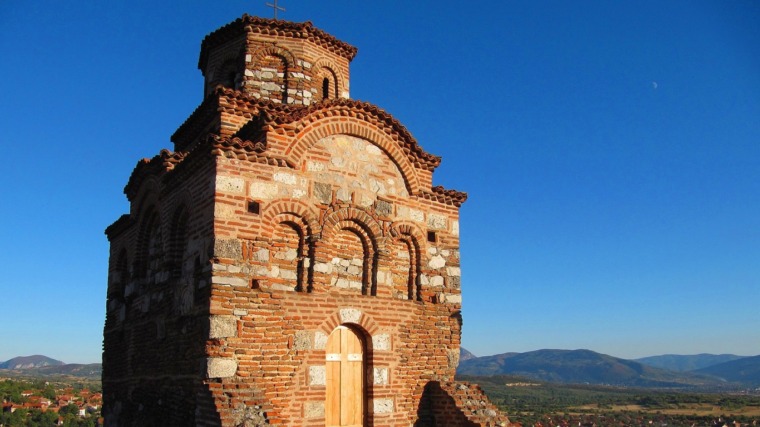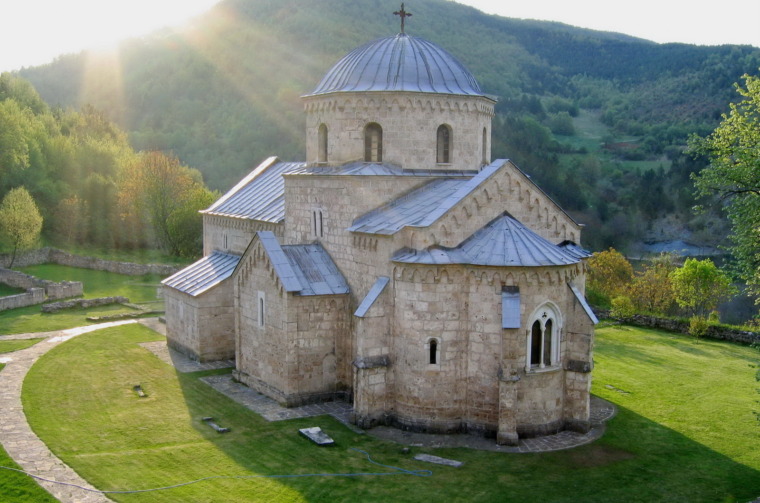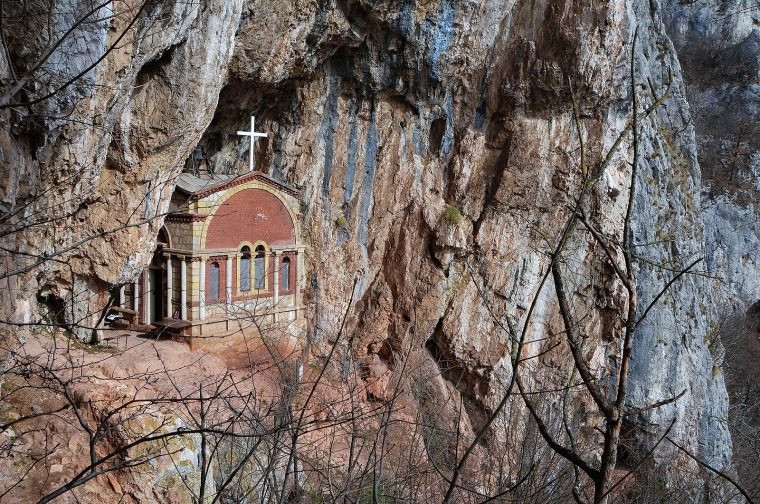Djurdjevi stupovi (eng. The Tracts of Saint George), one of the oldest Serbian monasteries, was built in the late 12th century and dedicated to St. George, is nowadays protected by the UNESCO
The Djurdjevi Stupovi monastery, built on a hill above the city of Novi Pazar, within the complex of Stari Ras (eng. The Old Ras), is among the jewels of Serbian medieval state placed on the UNESCO World Heritage list.
It is one of the oldest Serbian monasteries, endowment of Grand Prince Stefan Nemanja, which was built by the end of the 12th century. According to his son and biographer, Stefan Prvovenčani, the monastery was built after Nemanja took an oath in a cave to build a monastery dedicated to St George.
This monastery has survived for last 830 years, but for 300 years it was in ruins.
For the last 40 years the monastery has undergone a complex reparations process. Today it is mostly reconstructed and it is home to four monks. The monastery is characteristic for its position and two towers – the towers of the Saint George Church after which the monastery was named -Djurdjevi stupovi, as well as for its unique altar.
The monastery represents the synthesis of two medieval architectural styles – the Byzantine architecture from the East and Romanesque architecture from the West. The Saint George Church has a significant place in forming of the Raška school. The facade is completely done in Romanesque style with alternate rows of light and dark stone, while the interior is in Byzantine style.
The church was decorated with magnificent frescoes, but most of which were destroyed during the centuries. The compositions Evangelist St. Luke, Daniel the prophet, scenes from the life of St. George, and the portraits of endowerers are partially preserved. A part of the surviving frescoes was moved from the monastery to the National Museum in Belgrade.
Djurdjevi stupovi is one of the royal monasteries from the 13th century. The monastery has yet another patron – king Dragutin of the Nemanjić dynasty, who finished the church and was buried here according to his wish.
In 1689 the monastery was abandoned after the Austrian-Turkish war and the last 16 monks left the monastery fleeing from Turks. During the next two centuries Djurdjevi stupovi suffered numerous devastations and it burned five times, leaving the monastery in ruins.
There is not much left of the original frescoes, but we know how it once looked based on old photos taken between the World Wars. Among the frescoes there was the fresco of Christ with angels and the frescoes on the dome displayed the prophets Elijah, Elisha, Daniel and Zechariah
Upper and middle zone are dedicated to major holidays and scenes of Christ’s sufferings: Presentation at the temple, Baptism, Pentecost, the resurrection of Lazarus, Entry into Jerusalem, Transfiguration, betrayal of Judas, Assumption of the Virgin, Crucifixion and Moaning.
The lower zone displayed the holy warriors and busts of saints. After World War II a part of frescoes was taken to the National Museum in Belgrade.
The living quarters were built in 2002 and it was the key moment for the reconstruction of the monastery as the monastery once again welcomed the monks after the absence of three centuries.
The museum was built in front of the monastery where the most significant fragments from the church are displayed. Some of them are completely reconstructed.
How to get to the Djurdjevi stupovi monastery?
Djurdjevi Stupovi are in central Serbia, next to Novi Pazar which is 290km from Belgrade.
If you are coming by car from Belgrade the best road to take is along the Ibar roadway which goes towards Podgorica, over Lazarevac, Preljina, Kraljevo and Raška.
Djurdjevi stupovi are on a hill, 4 km west from a city which also has remains of the old city Ras, Sopoćani and the Church of Saint Apostles Peter and Paul.
When you are already here, don’t miss…
The Church of the Saint Apostles Peter and Paul, which is also protected by UNESCO and it’s at the beginning of the road to Djurdjevi Stupovi in the foothill only 2 km from Novi Pazar.
Walk around Novi Pazar and feel the mix of East and West, of Christianity and Islam… Don’t leave out the old bazaar and the Novopazar fort from the 15th century within it. The monuments of Islamic cultural heritage: Altun- Alem Mosque, built in the first half of the 16th century, as well as Ahmed Vojvoda Mosque – one of the oldest structures in Novi Pazar, which hails from the same period.
Besides the cultural monuments, the environment around Novi Pazar is known for its perfect nature. Because of this don’t miss going to the Uvac canyon – “the Serbian Colorado” located within the natural preserve of Uvac, in the Pešter plateau, when you head to the town of Sjenica.
If you go in the other direction and pass through Raška, you come to Kopaonik, one of the most beautiful and most visited mountains of Serbia, which both in the winter and summer provides different opportunities for a quality vacation and a fun experience, and in the winter it provides ideal conditions for snow sports.
Only 32km from Novi Pazar is located Golija – the mountain tourist center with modernized ski slopes but also wide glades for walks and hiking.

